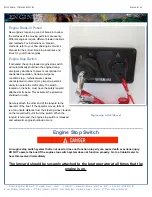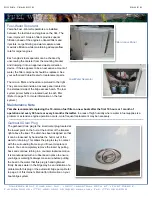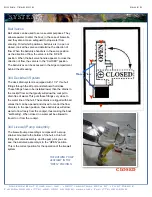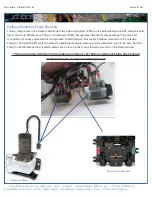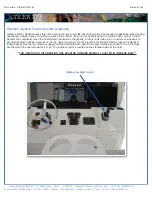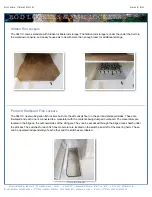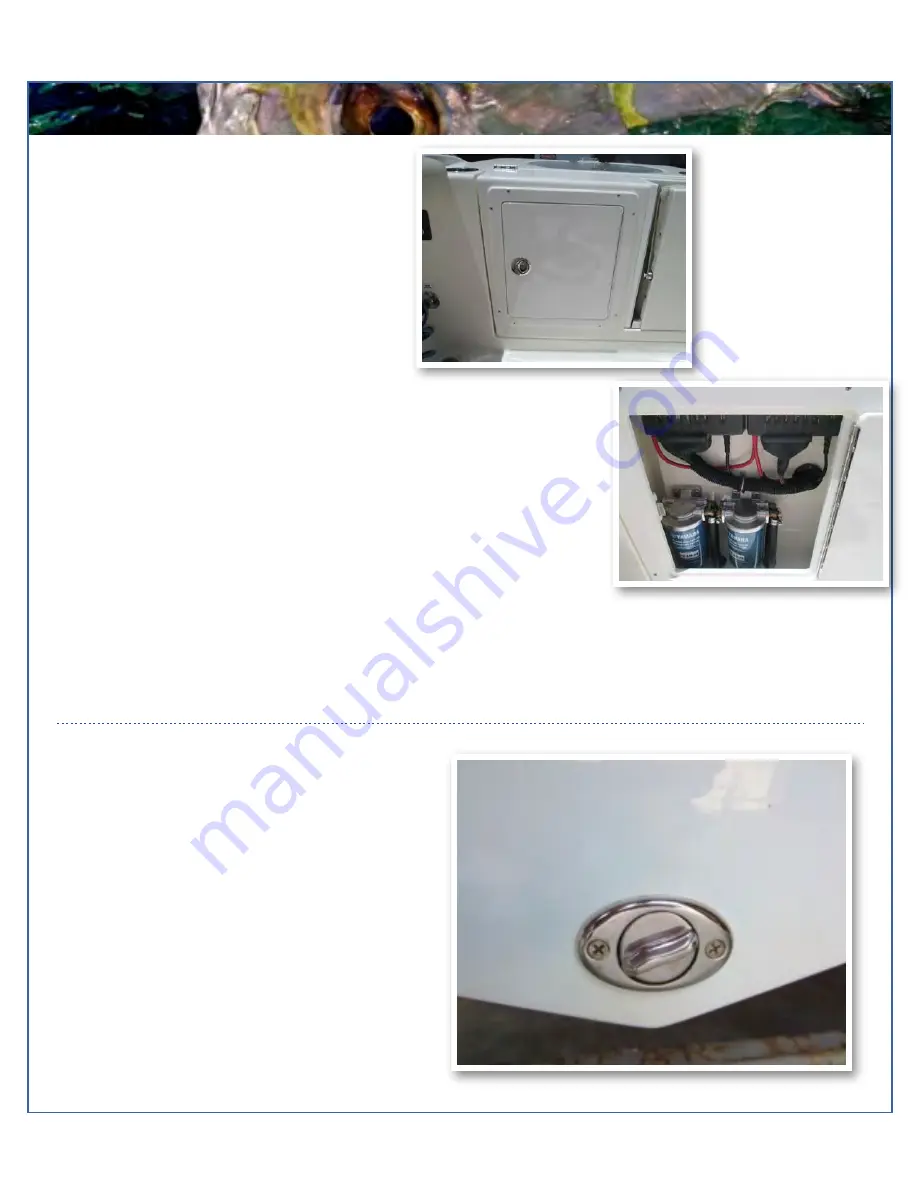
M o d e l Y e a r 2 0 1 6 p a g e
!
6
M a v e r i c k B o a t C o m p a n y , I n c . • 3 2 0 7 I n d u s t r i a l 2 9 t h S t . • F o r t P i e r c e ,
F l o r i d a 3 4 9 4 6 • ( 7 7 2 ) - 4 6 5 - 0 6 3 1 o r ( 8 8 8 ) - s h a l l o w • F a x : ( 7 7 2 ) 4 8 9 - 2 1 6 8
FUEL-WATER
Fuel/Water Separator
Fuel-Water Separator
Yamaha Fuel - Water Separators are installed
between the fuel tank and engines on the 344. The
new, improved 10-micron filters provide superior
filtration ahead of the engine's onboard filters and
injectors. Large filtering and water capture areas
maximize filtration while maintaining adequate flow
rate for larger engines.
Each engine's fuel separator can be checked by
unscrewing the canister from the mounting bracket
and dumping it into an approved waste collection
device. If there appears to be an excessive amount of
water, the filter component should be replaced. See
your authorized Cobia Dealer for replacement parts.
The micron filters and heads are pictured to the right .
They are mounted inside an access panel located on
the starboard side of the bilge access hatch. The fuel
system primer bulbs are located next to each filter.
(Refer to page 14 for more information on the fuel
system.)
Maintenance Note
Yamaha recommends replacing the 10- micron fuel filter on new boats after the first 10 hours or 1 month of
operation and every 50 hours or every 6 months thereafter.
In areas of high humidity where water in fuel supplies is a
problem or extensive engine operation occurs, more frequent replacement may be necessary.
Garboard Drain Plug
The garboard drain plug is the small metal plug located at
the lowest point on the hull, at the bottom of the transom
right above the keel. The drain has been designed so that
it can be loosened by hand while the hull is out of the
water for draining. This allows the plug to stay in contact
with the surrounding frame so you’ll never misplace or
lose it. You can completely remove the insert by pulling
back and continue turning in a counter clockwise motion.
It is manufactured with a rubber seal in place to ensure
you bilge is watertight. Always make sure before putting
the boat in the water that this plug is hand tightened
firmly. Excess water in the bilge may be an indication of a
problem with this plug or the automatic bilge pump. Refer
to page 6
of this Owner’s Manual for information on your
boats bilge system.
Filter Access Panel
Summary of Contents for 344 CC
Page 38: ...344 Wiring Harnesses...
Page 39: ......
Page 40: ......
Page 41: ......
Page 42: ......
Page 43: ......
Page 44: ......
Page 45: ......
Page 46: ......
Page 47: ......
Page 48: ......
Page 49: ...344 Power distribution from stern to helm...
Page 50: ...344 Power distribution diagram for aft bilge...
Page 51: ...344 Power distribution diagram for console...
Page 52: ...344 Power distribution diagram for leaning post batteries...




